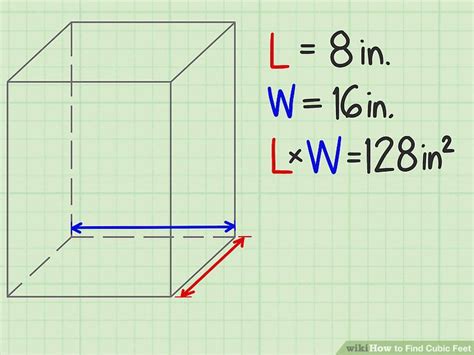How to Calculate Cubic Feet: A Complete Guide
Cubic feet (cu ft or ft³) represent the volume of a three-dimensional space. Understanding how to calculate cubic feet is essential for various tasks, from determining the size of a shipping container to calculating the volume of a room for renovations. This guide provides a comprehensive walkthrough, covering different shapes and offering helpful tips.
Understanding Cubic Feet
Before diving into calculations, let's solidify the concept. One cubic foot is the volume of a cube with sides measuring one foot in length, width, and height. Therefore, to find cubic feet, you essentially multiply the length, width, and height of an object or space.
Calculating Cubic Feet for Common Shapes
Here’s how to calculate cubic feet for various shapes:
Rectangular Objects (Boxes, Rooms, etc.):
This is the simplest calculation. The formula is:
Cubic Feet = Length (ft) x Width (ft) x Height (ft)
Example: A room is 10 feet long, 12 feet wide, and 8 feet high.
Cubic Feet = 10 ft x 12 ft x 8 ft = 960 cubic feet
Cylindrical Objects:
Cylinders, like pipes or tanks, require a slightly different approach. The formula is:
Cubic Feet = π x Radius² x Height
Where:
- π (pi) ≈ 3.14159
- Radius is half the diameter
Example: A cylindrical tank has a diameter of 4 feet and a height of 10 feet. The radius is 2 feet.
Cubic Feet = 3.14159 x 2² ft x 10 ft ≈ 125.66 cubic feet
Irregular Shapes:
Calculating cubic feet for irregular shapes can be more challenging. One common method is to divide the irregular shape into smaller, regular shapes (cubes, rectangular prisms, cylinders, etc.). Calculate the volume of each smaller shape and then add the volumes together to get the total cubic feet.
Tips and Tricks for Accurate Cubic Feet Calculations
- Consistent Units: Ensure all measurements (length, width, height) are in feet. Convert inches or yards to feet before calculating. 1 yard = 3 feet; 1 foot = 12 inches.
- Measurement Accuracy: Accurate measurements are crucial. Use a measuring tape for precise results, especially for larger spaces or important projects.
- Online Calculators: Several online cubic feet calculators are available. These can save time and reduce calculation errors, particularly for complex shapes. Simply input your measurements and let the calculator do the work.
- Consider Irregularities: For spaces with alcoves, recesses, or other irregularities, you might need to break down the calculation into smaller sections and sum the results.
- Rounding: Round your final answer to a reasonable number of decimal places based on the precision of your measurements.
Applications of Cubic Feet Calculations
Understanding how to calculate cubic feet has numerous practical applications:
- Shipping and Logistics: Determining the volume of goods for shipping and storage.
- Construction and Renovation: Estimating the amount of materials needed (concrete, drywall, etc.).
- HVAC Systems: Sizing heating and cooling systems for a space.
- Inventory Management: Calculating the storage space needed for inventory.
- Gardening: Calculating the volume of soil or mulch needed.
By following these steps and tips, you’ll master calculating cubic feet and confidently tackle various projects requiring volume measurements. Remember accuracy in measurements is key to accurate results.
